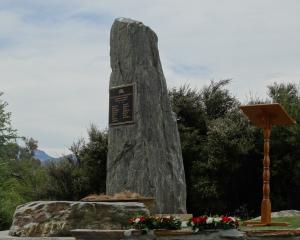The going away was kept very quiet. When reveille sounded in the mounted ranks at 3 a.m. the men turned out and found it wet and dismal overhead and underfoot.
They set to work briskly in the pouring rain, and, having quickly dressed by candle-light in their tents, were soon busy with preparations for departure.
They were all keen, and glad to get away from the camp, which has grown distasteful after the monotony of several weeks under canvas within its bounds.
A baggage train was drawn up at the siding, and after the men had packed up their kits they placed them on this, and they were taken to Port Chalmers.
Then the order to mount was given, and the first detachment left camp before it was yet daylight.
The whole mounted battalion went in detachments at intervals of an hour, as quietly as possible.
There was no demonstration and no fuss.
The necessary work was done quietly and efficiently, as though departure were still far distant and the whole affair purely a training exercise.
They rode down to Port Chalmers, where the horses were placed on board and the men took possession of their quarters on the ship.
One of the features of the departure, indeed, was the small number of people who were there, as compared with what might have been expected had the date of departure been known more certainly.
This absence of crowds and of everything in the nature of fuss or demonstration was exactly what the military authorities desired.
It is not to be supposed, however, that there was not a crowd at all at Port.
In the morning the people began to muster, and by midday there was a good number at Port, many being attracted by the band which played in the rotunda.
The train which left Dunedin at 10 minutes past 12, and those following during the afternoon, were packed to such an extent that standing room was not even available, and by early afternoon there was an assembly which it took the efforts of several constables to cope with.
The wharf was barricaded, and the gate was guarded by several sentries with fixed bayonets.
Further back a cordon of constables with outstretched arms stemmed a big crowd which, constantly augmented by arriving trains, threatened to overflow and rush on the barricade.
Occasional units burst through the restraining arms of the men in blue and rushed triumphantly down the wharf, only to be met by a curt refusal of the sentries to let them pass.
Here, at the gate, a little bunch of people waited patiently, but could not get in, even though they numbered prominent citizens and the relatives of officers of the force of high standing.
At a quarter to 5 the final toots of the siren on board No. 5 were given, and she started to move.
A wild chorus of cheers broke out, and continued as she slowly glided past the wharf.
The men on No. 9 vociferously cheered their comrades on the other ship as she ponderously backed and turned and stood on her course.
About 20 minutes later the propellers on No. 9 began to revolve, and she also glided out into the harbour, her officers and men waving their last adieux to their friends on the wharf.
Once clear of the wharves the two vessels lost little time , and their speedy passage down the channel and out of the Heads was a fine piece of seamanship that reflected creditably upon Captain Thomson and Senior Pilot McDougall.
Each vessel was accompanied by the two tugs and by a flotilla of launches and other small craft docked with bunting, which contrasted strongly with the sombre colour-tones of the two troopships and lent a touch of gaiety to an otherwise sad and solemn ceremony. - ODT, 23.9.1914.
•COPIES OF PICTURE AVAILABLE FROM ODT FRONT OFFICE, LOWER STUART ST, OR WWW.OTAGOIMAGES.CO.NZ

